- A $20 Million Price Adjustment On A LIsting Is Not The Big Deal It Used To Be
- Properties At The High End Are Much Harder To Price
- Listing Discounts and Marketing Times Tend To Be Longer At The High End
A Hamptons new build just had its price adjusted by $20 million upward, from $14,995,000 to $34,995,000, but Zillow shows it as a $20 million price cut, which caught our attention.
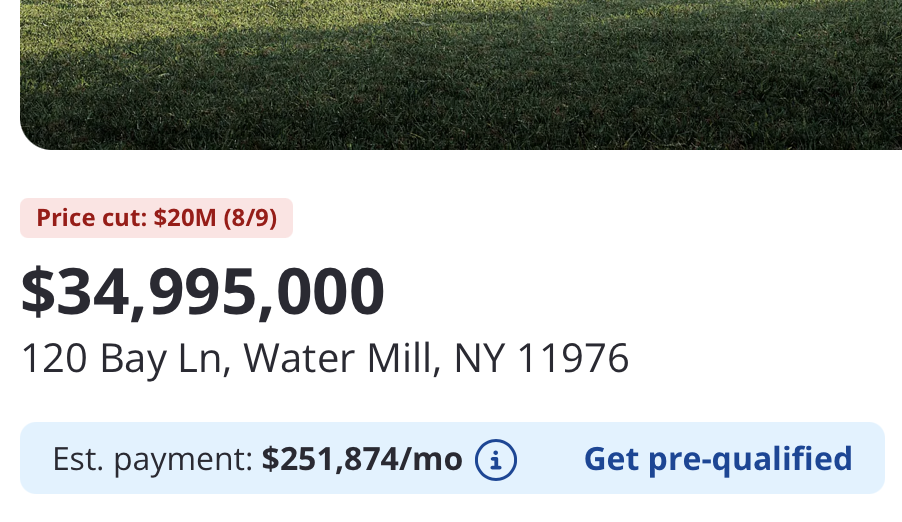
The Zestimate price history shows it is just short of $35 million in chart format. I probably don’t need to point out that the Zestimate doubled overnight when the price was doubled to $35 million. I wrote about Zestimate’s overreliance (full dependence) on real estate agent pricing expertise over its ability to estimate prices accurately. The jump in the chart below looks silly.
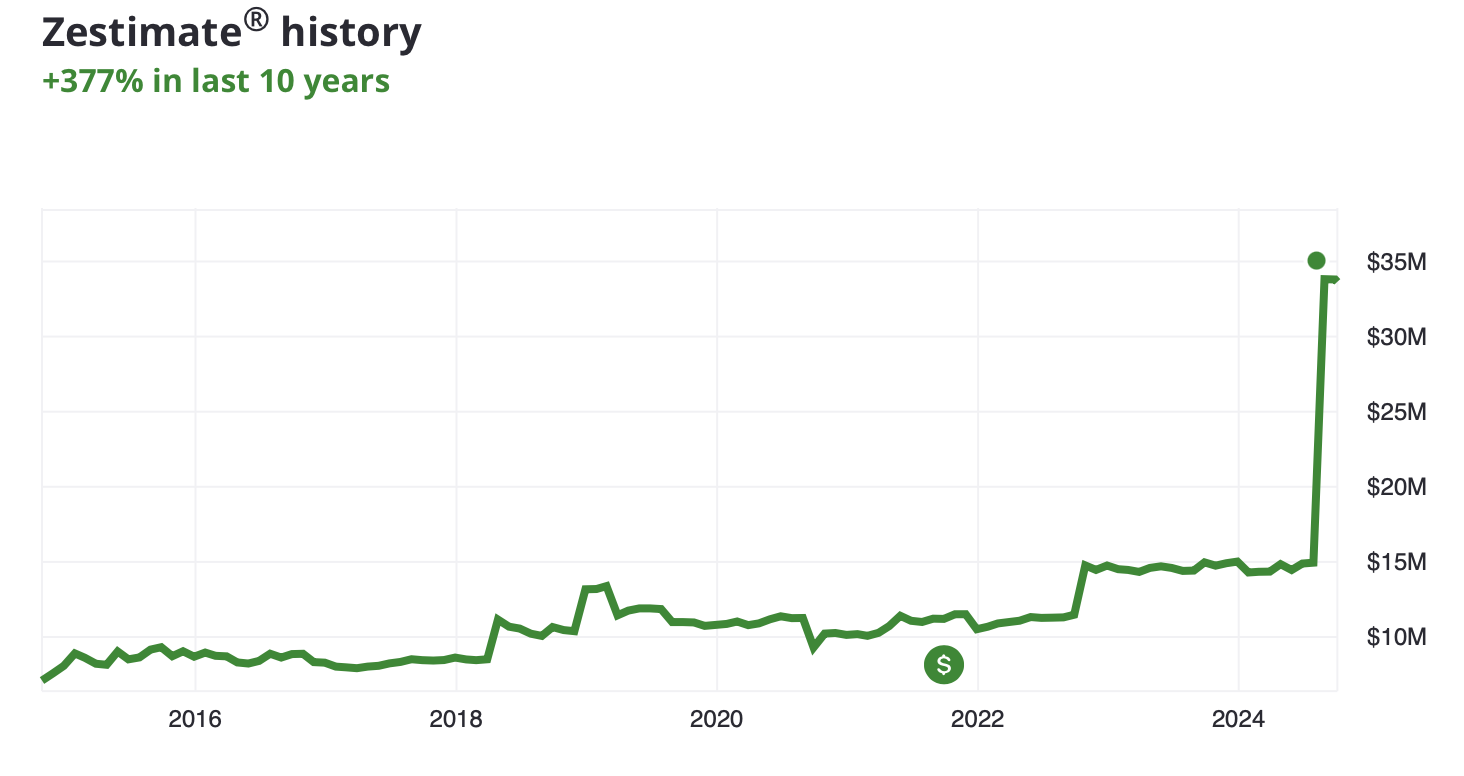
…and the price history in a list format shows a $20 million price increase from July to August, not a $20 million cut to $34,995,000.
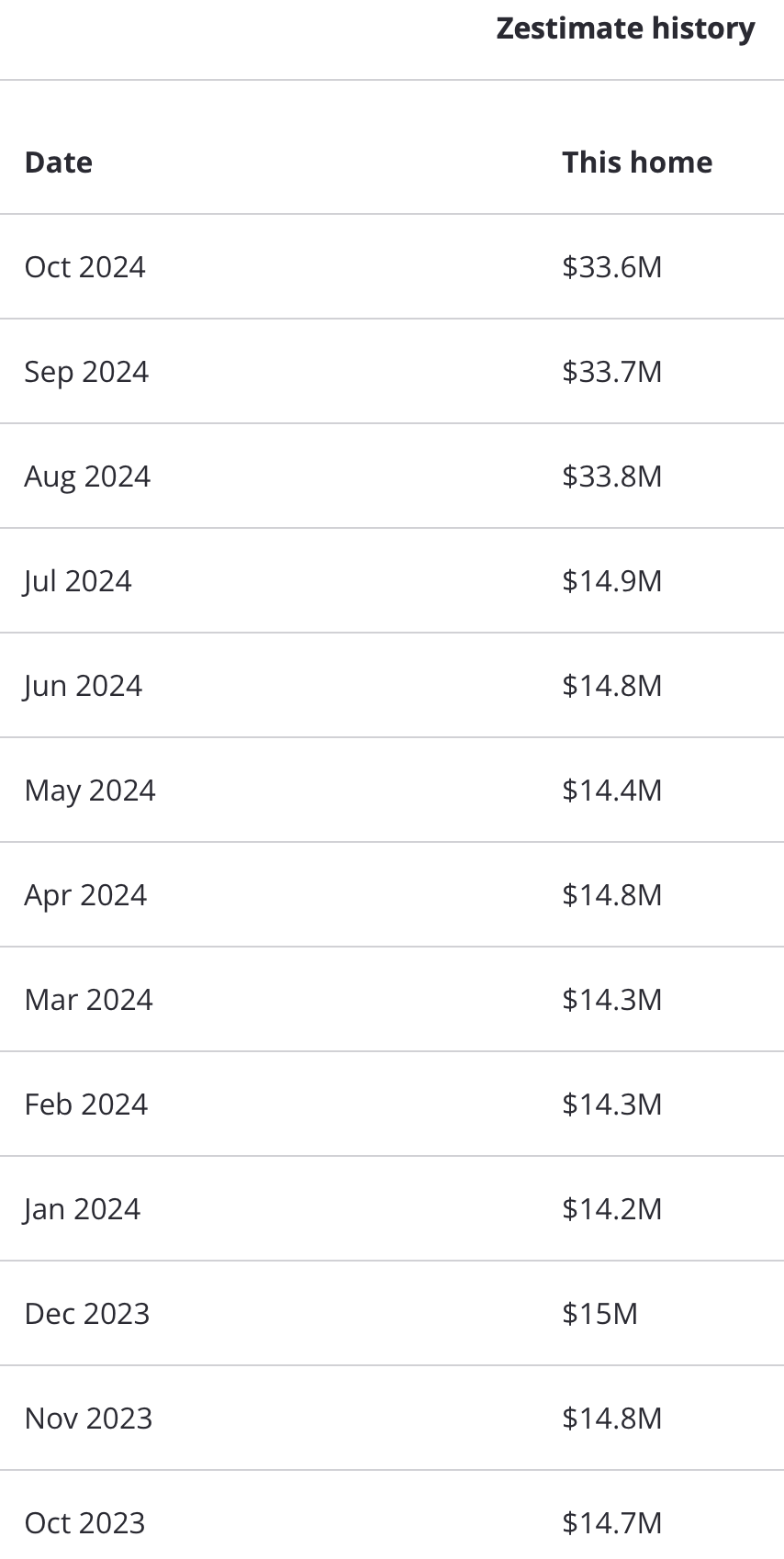
The actual listing with the listing brokerage shows the price at $34,995,000 right now.
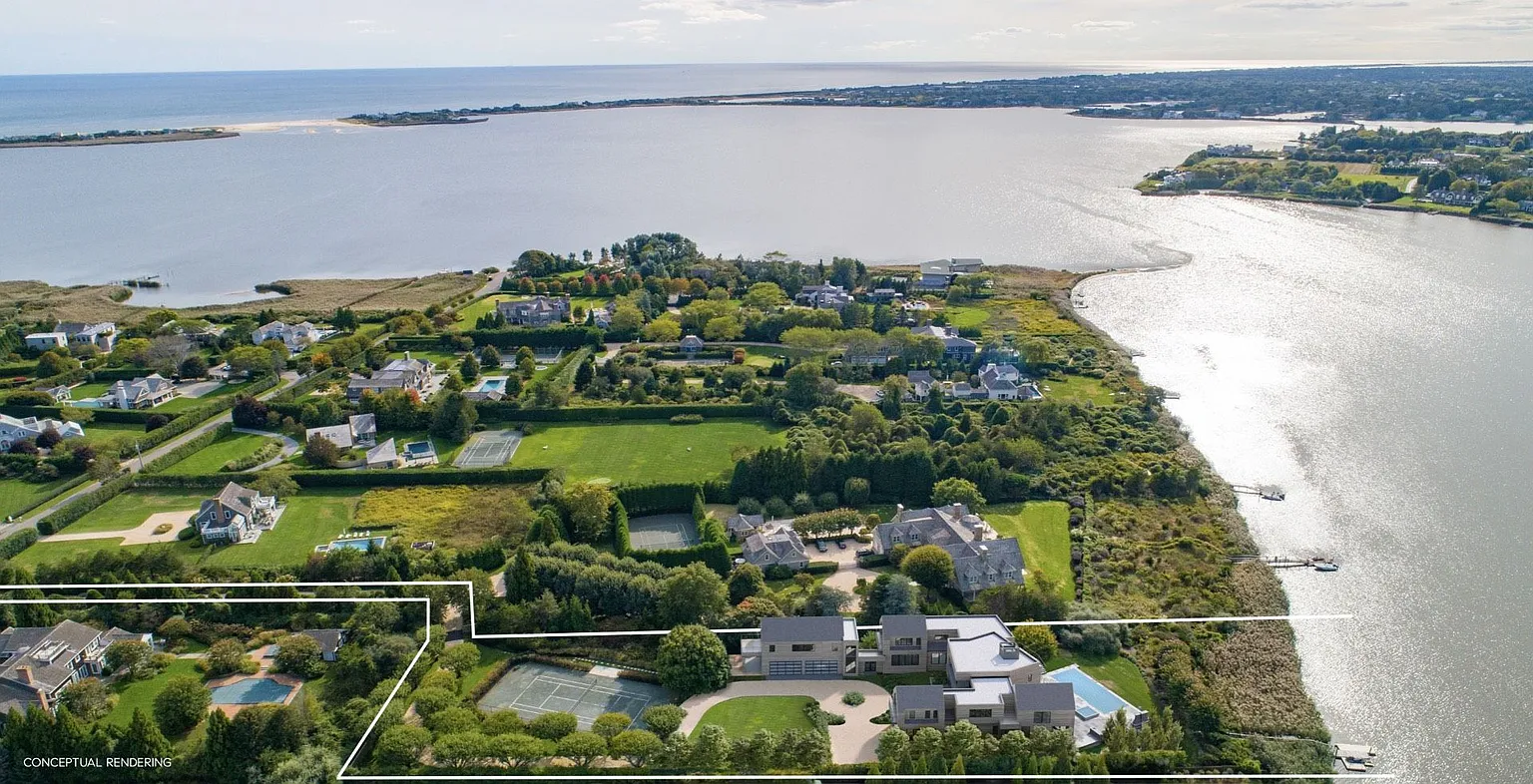
I don’t recall ever seeing such a significant adjustment to an original list price, let alone the Zestimate chasing the list price like a puppy dog.
I’m more interested in the idea that the pricing of listings is not a solid market fact that is anchored to the bedrock of a local market. This is born of the idea that a seller or an agent or both struggle to come up with a price that is representative of the local market or close to it. We could argue that pricing has become much more malleable and less specific in high-end real estate. The difficulty in pricing high-end real estate is reflected in the larger listing discounts that tend to occur at the top of the market than the remainder. High-end real estate is more problematic when it comes to accurate pricing.
Why does high-end real estate seem much more complicated to price these days?
- The surge in the use of cash as a bypass around bank underwriting
- The higher the price, the thinner the market (less data)
- The housing stock is much less homogenous
I wanted to quip that the sellers have less sense of urgency and are less realistic about home values, but that would be ridiculous. Talk to listing agents with difficult lower-end listings to sell. Those sellers are just as demanding.
Here’s a chart showing the highest price of each of the three main property types per year to illustrate just how erratic pricing is at the top of each of these submarkets. While this is Manhattan and not the Hamptons, where the above property is located, the point can be made that higher-end properties are less homogenous.
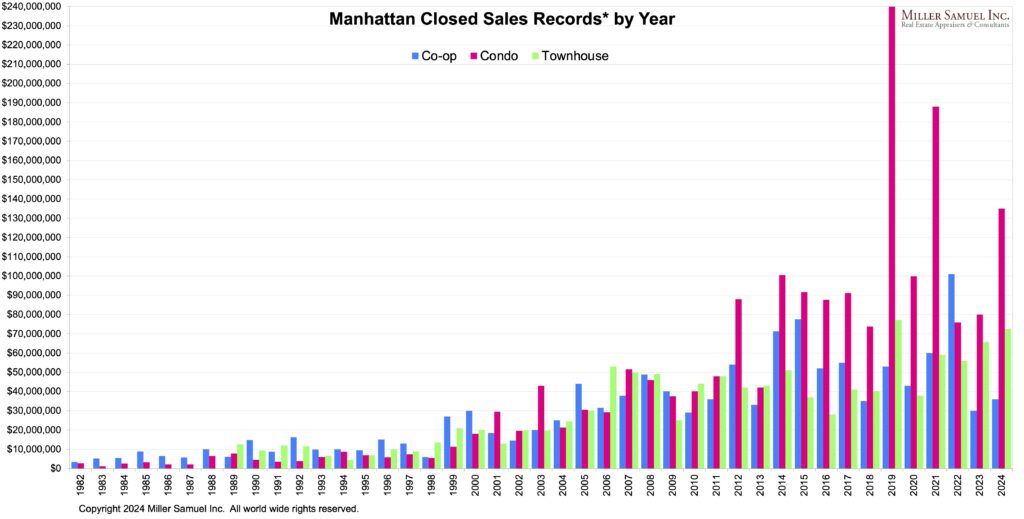
Final Thoughts
As housing prices at the high end become more detached from their local markets, they become even more difficult to price accurately. I secretly think the proliferation of reality television and the lack of personal shame in society these days places less pressure on sellers who wildly overprice a listing. The concept of overpricing is arguably very weird these days, and $20 million price swings on a listing don’t seem to be a big deal.
Did you miss yesterday’s Housing Notes?

October 6, 2024
This Is No Irish Carpenter Syndrome: The US Dollar Is Too Darn Strong
Image: ChatGPT
Housing Notes Reads
Market Reports
- Elliman Report: Florida New Signed Contracts 9-2024 [Miller Samuel]
- Elliman Report: New York New Signed Contracts 9-2024 [Miller Samuel]
- Elliman Report: Manhattan Sales 3Q 2024 [Miller Samuel]



![[Podcast] Episode 4: What It Means With Jonathan Miller](https://millersamuel.com/files/2025/04/WhatItMeans.jpeg)